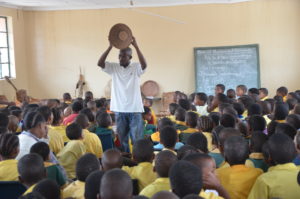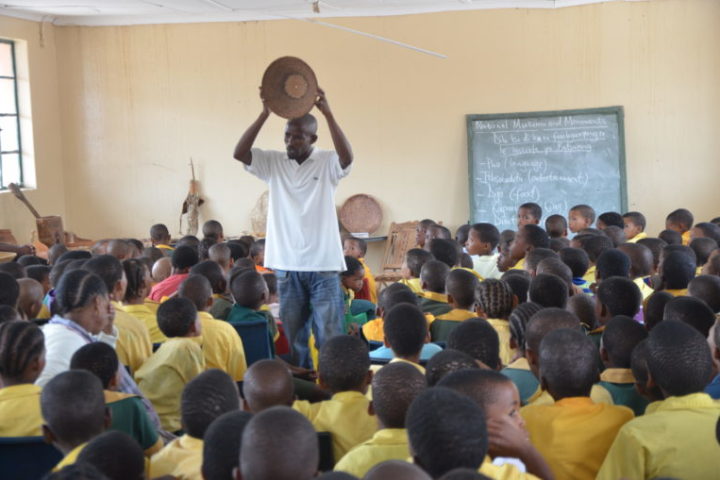
Goabaone Montsho
Ethnology Curator at the Botswana National Museum
Museums have no borders,
they have a network
June 6, 2020
Keywords: climate change; Botswana; community museums; awareness; mediation.
Museum institutions, in developed and developing countries, are socially and culturally positioned to address their audiences, raise awareness and instigate behavioural changes to counter global warming. Many societies in developing countries are suffering badly from climate change, which drastically impacts the sustainability of traditional methods of sustenance that are primarily based on natural resources. In response to this issue the Botswana National Museum and many other community museums under its auspices, such as Tsodilo Hills and Kuru museums, are concentrating their energies on preserving local tangible and intangible cultural heritage on the verge of extinction through exhibitions, education, research and collaboration with indigenous communities.
Raising awareness through traditional and scientific knowledge
The Botswana National Museum promotes indigenous environmentally friendly methods of preservation. Botswana communities have traditionally used resources such as indigenous herbs, wood, ash and cow dung to control pest infestations on their crops, food storage facilities, habitations, and so on. Presenting these methods within the museum walls could contribute to the preservation of biodiversity and the environment in the long term. The switch from using environmentally toxic pesticides to green pesticides is a solution to safeguard the ecosystem. Through its annual newsletter, The Zebra’s Voice, the National Museum provides a platform where innovative ideas and dialogues on green technology are published.
Raising awareness through educational programmes
Museums in developing countries can use their cultural capital to relate climate change messages to their local audience, through exhibitions and outreach programmes. For example, the Botswana National Museum runs an outreach ethnographic programme known as Pitse ya Naga mo Maotwaneng meaning ‘a zebra on the move’. Within this programme a curator organises educational tours for elementary schools in the outskirts of the country, to introduce children to cultural and environmental issues such as indigenous methods of conservation, sustenance, ecology and art, in order to instil a sense of awareness and responsibility. It is through Pitse ya Naga mo Maotwaneng that children can understand how modern methods of consumption impact their environment, in contrast with traditional sustenance methods. They learn that planet Earth is overwhelmed by the side effects of the present-day consumer-driven economy model.

Museums as social mediators for local communities
It is difficult for people in remote areas of Botswana to access information on climate change via written or on-line platforms; however, thematic pictorial exhibitions can be instrumental in telling the story of climate justice by displaying relevant artefacts and pictures. The concept of climate change is difficult for people in rural areas to comprehend, particularly as their languages often do not include scientific terms and jargon such as ‘carbon footprints’, ‘ozone layer’, etc. The role of museums is to remove the communication barriers on global warming through awareness raising partnerships with local communities. Traditional methods of education could be used as media to relay the message to these local communities in Botswana; for instance, traditionally knowledge was passed on through folk tales and legends told at evenings around a bonfire. It is imperative for community museums to reproduce a similar scenario, setting up programmes where audiences gather around a bonfire to listen and talk about climate justice and its impact on local heritages. It is during these events that consensus on culturally relevant strategies on climate change could be reached.
Through their international and social networks, museums are capable of acting as advocates, representing the voices of marginalised communities concerning global issues like climate justice. As agents of social change, museums can make the climate change debate more accessible to all communities, regardless of their cultural differences.
References and resources:
James and Jocelyn Denbow.1993. Uncovering Botswana`s Past. Botswana: Government Printing.
National Museum, Monument and Art Gallery – Botswana (1988). The Zebra’s Voice, Vol. 2.
National Museum, Monument and Art Gallery – Botswana (1993). The Zebra’s Voice, Vol. 20, p. 20.ù
Opinions expressed in the article do not commit ICOM in any way and are the responsibility of its author.
To participate in our newest ICOM Voices call for contributions, click here.
